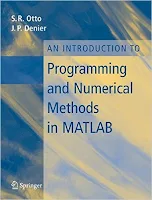Linear Programming with MATLAB
Michael C. Ferris, Olvi L. Mangasarian, Stephen J. Wright ... 280 pages - Publisher: Society for Industrial and Applied Mathematics; 1st edition (July, 2008) ... Language: English - ISBN-10: 0898716438 - ISBN-13: 978-0898716436 ...
This textbook provides a self-contained introduction to linear programming using MATLAB® software to elucidate the development of algorithms and theory. Early chapters cover linear algebra basics, the simplex method, duality, the solving of large linear problems, sensitivity analysis, and parametric linear programming. In later chapters, the authors discuss quadratic programming, linear complementarity, interior-point methods, and selected applications of linear programming to approximation and classification problems. Exercises are interwoven with the theory presented in each chapter, and two appendices provide additional information on linear algebra, convexity, nonlinear functions, and on available MATLAB commands, respectively. Readers can access MATLAB codes and associated mex files at a Web site maintained by the authors. Only a basic knowledge of linear algebra and calculus is required to understand this textbook, which is geared toward junior and senior-level undergraduate students, first-year graduate students, and researchers unfamiliar with linear programming.
This textbook provides a self-contained introduction to linear programming using MATLAB® software to elucidate the development of algorithms and theory. Early chapters cover linear algebra basics, the simplex method, duality, the solving of large linear problems, sensitivity analysis, and parametric linear programming. In later chapters, the authors discuss quadratic programming, linear complementarity, interior-point methods, and selected applications of linear programming to approximation and classification problems. Exercises are interwoven with the theory presented in each chapter, and two appendices provide additional information on linear algebra, convexity, nonlinear functions, and on available MATLAB commands, respectively. Readers can access MATLAB codes and associated mex files at a Web site maintained by the authors. Only a basic knowledge of linear algebra and calculus is required to understand this textbook, which is geared toward junior and senior-level undergraduate students, first-year graduate students, and researchers unfamiliar with linear programming.





